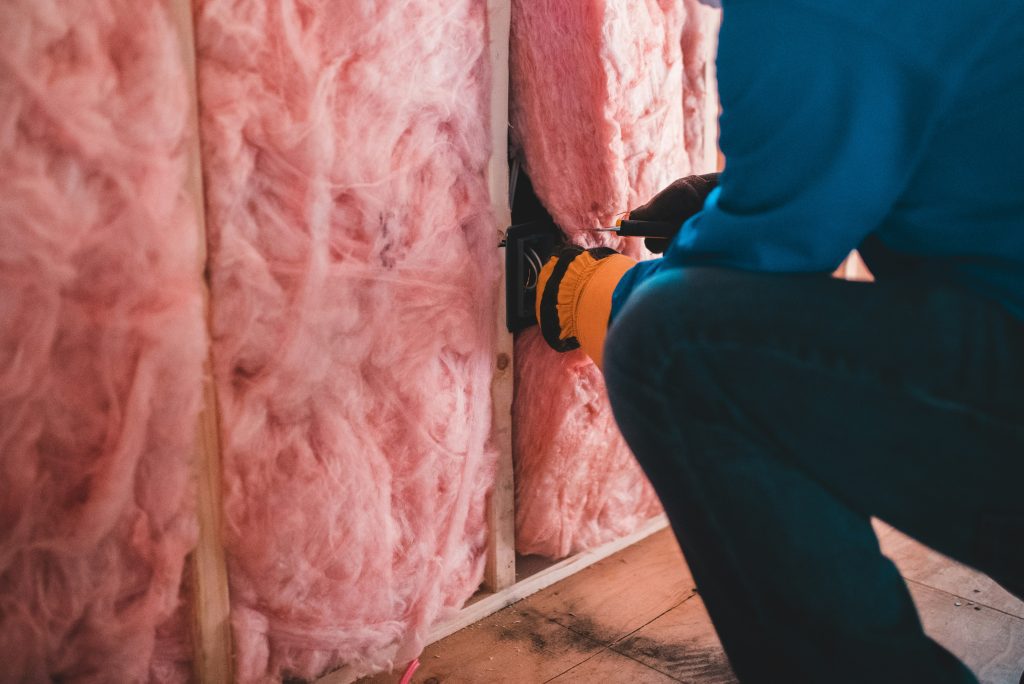In contemporary society, the significance of energy efficiency within domestic settings cannot be overemphasised. It not only aids in reducing energy costs but also plays a vital role in decreasing carbon emissions and safeguarding the environment. Cost-effective home energy efficiency involves making judicious choices that both save money and contribute to a more sustainable future.
By implementing environmentally friendly solutions, such as insulation, energy-efficient appliances, and renewable energy sources, homeowners can markedly reduce their carbon footprint whilst enjoying a more comfortable living space. Cost-effective home energy efficiency is not merely about implementing isolated changes, but rather adopting a comprehensive approach to energy conservation. This can encompass a combination of behavioural modifications, home improvements, and the utilisation of renewable energy sources.
By taking a proactive stance on energy efficiency, homeowners can positively impact the environment whilst reaping the financial benefits of reduced energy consumption. This article will explore various eco-friendly home energy solutions, including insulation and draught-proofing, energy-efficient appliances and lighting, renewable energy sources, and behavioural changes that can aid in conserving energy. By implementing these strategies, homeowners can create a more sustainable and cost-effective living environment for themselves and future generations.
Summary
- Cost-effective home energy efficiency is essential for reducing energy bills and environmental impact.
- Eco-friendly home energy solutions can include renewable energy sources and energy-efficient appliances.
- Insulation and draught-proofing are key to maintaining a comfortable and energy-efficient home.
- Energy-efficient appliances and lighting can significantly reduce energy consumption and costs.
- Renewable energy sources such as solar panels and wind turbines can provide sustainable energy for homes.
Eco-Friendly Home Energy Solutions
Eco-friendly home energy solutions are essential for reducing energy consumption and minimising the environmental impact of household activities. One of the most effective ways to achieve this is through the use of insulation and draught-proofing. By properly insulating the home and sealing any gaps that allow heat to escape, homeowners can significantly reduce their energy bills and create a more comfortable living environment.
Additionally, energy-efficient appliances and lighting play a crucial role in reducing electricity consumption. By choosing appliances with high energy efficiency ratings and using LED lighting, homeowners can save money on their energy bills while also reducing their carbon footprint. Another important aspect of eco-friendly home energy solutions is the use of renewable energy sources.
Solar panels, wind turbines, and geothermal systems are all viable options for homeowners looking to generate their own clean energy. By harnessing the power of renewable energy, homeowners can reduce their reliance on traditional fossil fuels and contribute to a more sustainable energy landscape. Finally, behavioural changes such as turning off lights when not in use, using natural light whenever possible, and adjusting the thermostat to conserve energy can all make a significant difference in reducing household energy consumption.
Insulation and Draught-proofing

Insulation and draught-proofing are essential components of cost-effective home energy efficiency. Proper insulation helps to keep the home warm in winter and cool in summer by preventing heat from escaping or entering the home. This not only creates a more comfortable living environment but also reduces the need for excessive heating or cooling, ultimately leading to lower energy bills.
Additionally, draught-proofing involves sealing any gaps or cracks in windows, doors, and other areas of the home where heat can escape. By addressing these areas of heat loss, homeowners can further improve the energy efficiency of their homes. There are various types of insulation available, including fibreglass, cellulose, and foam insulation, each with its own benefits and considerations.
Additionally, draught-proofing can be achieved through the use of weather stripping, caulking, and sealants to seal any gaps or cracks in the home. By investing in proper insulation and draught-proofing, homeowners can create a more energy-efficient living space that is both comfortable and cost-effective. These measures not only reduce energy consumption but also contribute to a more sustainable lifestyle by minimising the environmental impact of household activities.
Energy-Efficient Appliances and Lighting
| Appliance/Lighting | Energy Efficiency Rating | Annual Energy Cost |
|---|---|---|
| LED Bulb | A++ | £5 |
| Energy Star Refrigerator | A++ | £50 |
| Energy-Efficient Washing Machine | A++ | £30 |
| Smart Thermostat | A++ | £40 |
Energy-efficient appliances and lighting play a crucial role in reducing household energy consumption. When shopping for new appliances, homeowners should look for products with high energy efficiency ratings, such as those with Energy Star certification. These appliances are designed to use less energy while still providing the same level of performance, ultimately leading to lower energy bills.
Additionally, LED lighting is an excellent choice for reducing electricity consumption. LED bulbs use significantly less energy than traditional incandescent bulbs and have a much longer lifespan, making them a cost-effective and eco-friendly lighting option. In addition to choosing energy-efficient appliances and lighting, homeowners can also make small changes in their daily habits to further reduce energy consumption.
This can include simple actions such as turning off lights when leaving a room, unplugging electronics when not in use, and using natural light whenever possible. By combining these behavioural changes with the use of energy-efficient appliances and lighting, homeowners can make a significant impact on their energy bills while also contributing to a more sustainable lifestyle.
Renewable Energy Sources
Renewable energy sources offer homeowners an opportunity to generate their own clean energy while reducing their reliance on traditional fossil fuels. Solar panels are one of the most popular options for residential renewable energy generation. By harnessing the power of the sun, homeowners can generate electricity for their homes while also reducing their carbon footprint.
Additionally, wind turbines and geothermal systems are viable options for homeowners looking to invest in renewable energy sources. These systems can provide a reliable source of clean energy while also reducing the environmental impact of household activities. In addition to generating clean energy for the home, renewable energy sources can also provide financial benefits for homeowners.
Many governments offer incentives and rebates for homeowners who invest in renewable energy systems, making it an attractive option for those looking to reduce their energy bills while also contributing to a more sustainable future. By incorporating renewable energy sources into their homes, homeowners can take a proactive approach to reducing their carbon footprint and creating a more sustainable living environment for themselves and future generations.
Behavioural Changes and Energy Conservation

Behavioural changes play a crucial role in reducing household energy consumption and creating a more sustainable living environment. Simple actions such as turning off lights when not in use, using natural light whenever possible, and adjusting the thermostat to conserve energy can all make a significant difference in reducing energy bills. Additionally, unplugging electronics when not in use and using energy-efficient cooking methods can further contribute to reduced energy consumption.
In addition to making small changes in daily habits, homeowners can also consider larger behavioural changes such as carpooling or using public transportation to reduce their carbon footprint. By taking a proactive approach to energy conservation, homeowners can make a significant impact on their energy bills while also contributing to a more sustainable lifestyle. Ultimately, behavioural changes are an essential component of cost-effective home energy efficiency and play a crucial role in creating a more sustainable living environment for future generations.
Conclusion and Additional Resources for Eco-Friendly Home Energy Efficiency
In conclusion, cost-effective home energy efficiency is all about making smart choices that not only save money but also contribute to a more sustainable future. By implementing eco-friendly solutions such as insulation and draught-proofing, energy-efficient appliances and lighting, renewable energy sources, and behavioural changes that conserve energy, homeowners can significantly reduce their carbon footprint while enjoying a more comfortable living space. It is essential for homeowners to take a proactive approach to energy efficiency by adopting a holistic approach that includes both home improvements and behavioural changes.
For those looking to learn more about eco-friendly home energy efficiency, there are various resources available to help homeowners make informed decisions about reducing their energy consumption. Government websites often provide information on available incentives and rebates for renewable energy systems, while local utility companies may offer tips and resources for reducing household energy consumption. Additionally, there are many online resources and community organisations dedicated to promoting sustainable living practices that can provide valuable information for homeowners looking to create a more eco-friendly living environment.
In conclusion, cost-effective home energy efficiency is essential for reducing household energy consumption and minimising the environmental impact of household activities. By implementing eco-friendly solutions such as insulation and draught-proofing, energy-efficient appliances and lighting, renewable energy sources, and behavioural changes that conserve energy, homeowners can create a more sustainable living environment while also enjoying the financial benefits of reduced energy bills. It is crucial for homeowners to take a proactive approach to cost-effective home energy efficiency by adopting a holistic approach that includes both home improvements and behavioural changes.
If you’re looking to improve your home’s energy efficiency on a budget, you may also be interested in learning about environmentally friendly landscaping tips. This article on greening up your yard provides practical advice on how to create a more sustainable outdoor space. By implementing these tips alongside your home energy efficiency improvements, you can create a more eco-friendly and cost-effective living environment.
FAQs
What are some effective ways to improve home energy efficiency on a budget?
Some effective ways to improve home energy efficiency on a budget include sealing air leaks, installing energy-efficient lighting, using programmable thermostats, and insulating the home.
How can sealing air leaks improve home energy efficiency?
Sealing air leaks can improve home energy efficiency by preventing warm air from escaping in the winter and cool air from escaping in the summer. This can reduce the workload on heating and cooling systems, leading to lower energy bills.
What are some energy-efficient lighting options for the home?
Energy-efficient lighting options for the home include LED bulbs, compact fluorescent lamps (CFLs), and halogen incandescent bulbs. These options use less energy and last longer than traditional incandescent bulbs.
How can programmable thermostats help improve home energy efficiency?
Programmable thermostats can help improve home energy efficiency by allowing homeowners to set specific temperatures for different times of the day. This can help reduce energy usage when the home is unoccupied or when occupants are asleep.
Why is home insulation important for energy efficiency?
Home insulation is important for energy efficiency because it helps to keep the home at a consistent temperature, reducing the workload on heating and cooling systems. Proper insulation can also help prevent air leaks and drafts.



